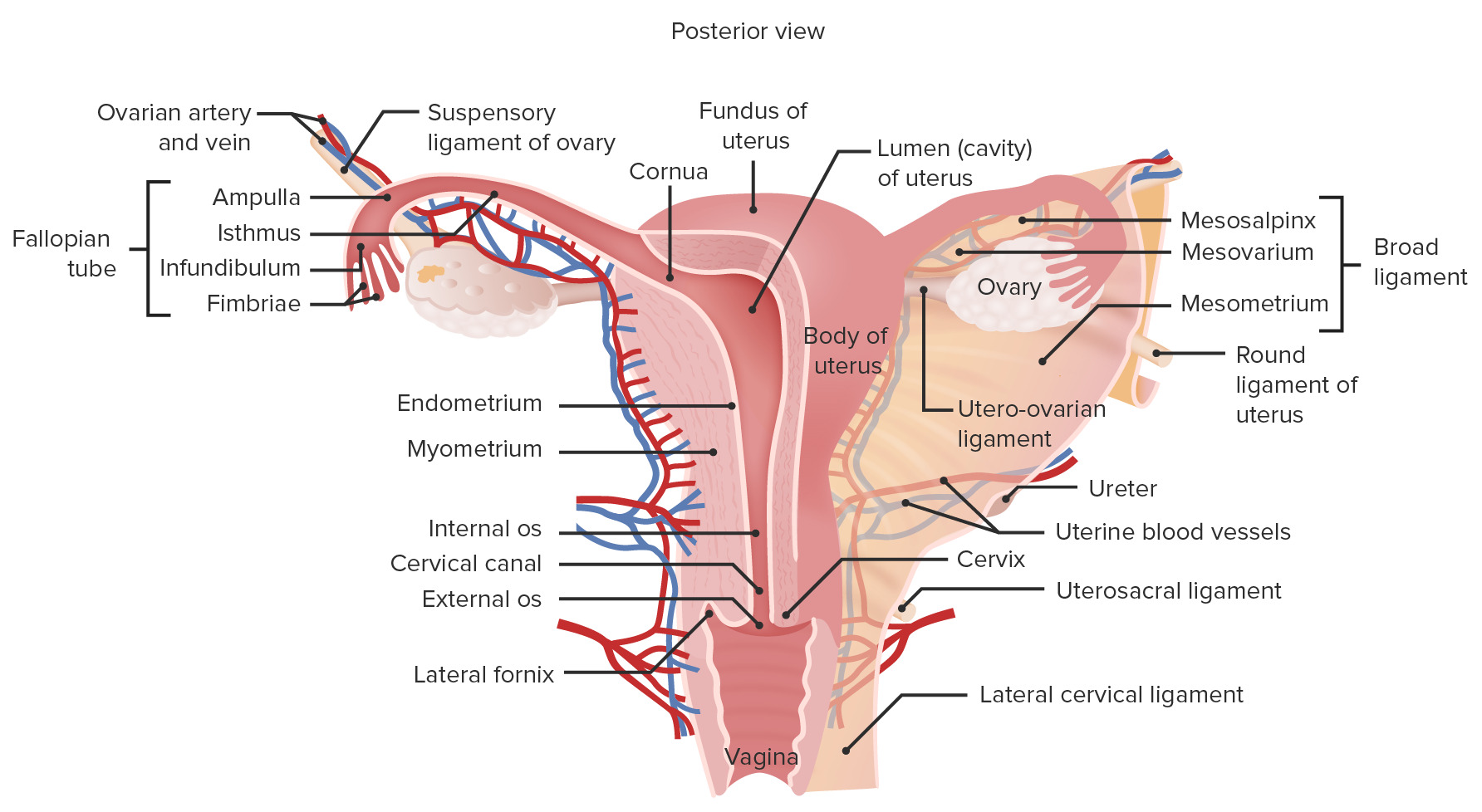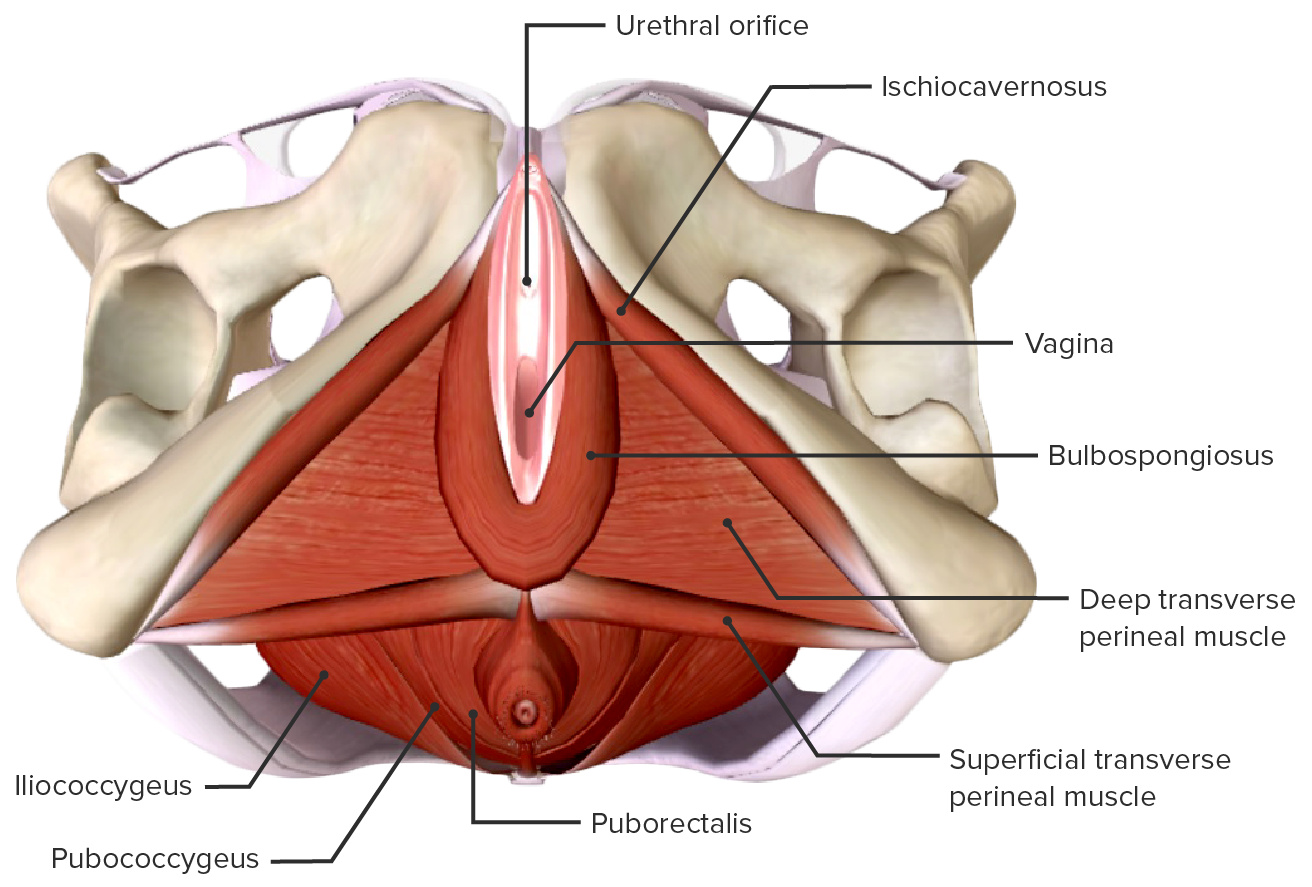Playlist
Show Playlist
Hide Playlist
Ovary: Secondary and Mature Follicle – Female Reproductive System
-
Slides Female reproductive system ovary.pdf
-
Reference List Histology.pdf
-
Download Lecture Overview
00:01 Now, we see a very large mature follicle, secondary follicle on the left hand side, you can see the oocyte within it and on the far right hand side you can see a huge follicle at least taking a different magnification, and the mature follicle or the Graafian follicle as it’s called as its about to ovulate is very, very large. 00:25 It’s a huge structure, and because it’s so huge, you don’t often see sections through the oocyte as you do on the left hand side is just a chance, that when you section some of these large follicles that you actually see the egg as well of the oocyte Now, on the left hand side, the secondary where the large mature follicle, it’s gone from a secondary perhaps to the large follicular stage, you can see its accumulated fluid that’s in that space, it’s called the antrum space, and the antrum space actually pushes all the granulosa cells add into the periphery. 01:08 Look at the oocyte, you can see the clear stained zona pellucida around it, the oocyte is bright pink, stain in this section. 01:20 The cluster of granulosa cells around the oocyte are a group of cells we termed the corona radiata, the crown around the oocyte. 01:33 This group of granulosa cells are going to persist even after ovulation, and the very inner layer of these corona radiata cells actually penetrate microvillus projections through the zona pellucida and contact the microvilli of the oocyte. 01:55 So, there’s communication between the two, there’s interactions and control mechanisms going on. 02:01 And then, notice on the oocyte and the corona radiata are attached to the other cells around the periphery, the follicle by another massive cells, that’s called the cumulus oophorus. 02:17 So, here’s the antrum, there’s the cumulus oophorus that I referred to and the corona radiata is shown around the oocyte. 02:29 The Graafian follicle is shown here as I pointed out, but I just want to mention a little change that’s occurring just prior to ovulation. 02:41 If we can imagine, we could see the oocyte inside this Graafian follicle, I want to just describe a few changes. 02:50 Firstly, during the follicular phase, as I said before around the sixth day, why is it follicles are stimulated to go through this growth phase? But anyone eventually is going to eventually ovulate, the rest as I said before undergo degeneration or atresia. 03:13 Something happens by chemically inside these follicles, and I just wanted to summarize a very important concept. 03:23 Have a look at the membrana granulosa in this large secondary follicle on the left hand side. 03:31 Recall that those follicular cells are granulosa cells as secreting estrogens under the influence of FSH, they're secreting those estrogens because they get androgens from the Theca interna, under the influence of LH. 03:50 Well, what happens just prior to ovulation? One of these follicles or perhaps a couple of them actually start to get receptors for LH in the granulosa cells. 04:05 Those granulosa cells up until now have only had receptors for FSH which controls their production of estrogens. 04:13 Suddenly, about 12 hours before ovulation or maybe even a little bit earlier, they acquire or some acquire the ability to have LH receptors on these cell membranes as well, and that’s extremely important for two reasons. 04:31 One is, one of these follicles is gonna get more of these receptors than the others and therefore they’re in a position to respond first or best to the LH surge that we see at the time of ovulation that induces ovulation of one of these follicles. 04:50 So, the dominant follicle if you like, the one that has the more numbers of LH receptors can respond to that LH surge and therefore ovulate. 05:01 But another thing also happens, those LH receptors are also very important for the eventual destination of this Graafian follicle once it ovulates. 05:13 Those LH receptors is gonna be extremely important on these cells, for those cells to convert to produce progesterone after ovulation. 05:24 And therefore, we enter the progesterone or the luteal phase of the ovarian cycle. 05:30 And some of that progesterone gets produced by these cells just prior to ovulation. 05:35 So, those two very important concepts are very important to understand with regard to responding to the LH surge ovulation and then finally, being out to produce progesterone into -- in the corpus luteum which is -- what this follicle will develop into after ovulation. 05:58 Again, you can see the thecal layers here, they’re becoming more engorged with blood which assess and also the ovulatory process but also at the time of ovulation, these thecal layers, the theca interna anyway is gonna penetrate into the ruptured follicle up until now follicular cells do not have direct blood supply, they receive all their nutrients by diffusion from the theca interna, into the cells of the granulosa, but after ovulation as we'll see this theca interna layer, the theca interna, the very vascular-like I can actually see here quite prominently will invade the developing corpus luteum and convert the corpus luteum into an endocrine organ. 06:46 As I mentioned earlier, a lot of the follicles undergo atresia degeneration, and you'll see certain signs of the atretic follicles in the ovary. 06:58 On the one on the left you can see that the cells just don’t look as pretty as I do in a normal mature or developing follicle. 07:07 There’s a lot of cells that are lost into moving into the internal space. 07:11 If you look on the right hand side, on the very right bottom corner, you'll see these little sharp pink structures, shiny pink structures found in the ovary, these represent the zona pellucida’s, that had remained after the degeneration of follicle of certain sizes. 07:29 And again, on the right hand side of the right hand section, you can see a rather elongated pink structure that’s called the glassy membrane, because one thing that happens during atresia is that the basement membrane separating the thecal layers from the granulosa layers of the developing follicle hypertrophies and during atresia, it gets thicker and thicker and rather are for more staining and were you referred to it as being a glassy membrane. 08:05 These are all evidence of follicular atresia.
About the Lecture
The lecture Ovary: Secondary and Mature Follicle – Female Reproductive System by Geoffrey Meyer, PhD is from the course Reproductive Histology.
Included Quiz Questions
Which of the following regarding the physiology of ovulation is INCORRECT? (LH, luteinizing hormone)
- Granulosa cells synthesize increasing amounts of estrogen in response to LH stimulation.
- Progesterone production occurs in the second half of the menstrual cycle triggered by luteinizing hormone.
- Granulosa cells in the dominant follicle begin to express increasing amounts of LH receptors, which become quite abundant just prior to ovulation.
- Granulosa cells in the mature follicle secrete increasing amounts of estrogen in response to FSH stimulation.
- The dominant follicle has the highest number of LH receptors and is best sensitized to respond to the LH surge.
Where in the dominant follicle does fluid accumulate?
- Antrum
- Cortex
- Oocyte
- Medulla
- Hilum
Which of the following layers of cells constitiutes the outer surface of the human ovum following ovulation?
- Corona radiata
- Zona pellucida
- Epithelial cells
- Antrum
- Stroma
Customer reviews
3,3 of 5 stars
| 5 Stars |
|
1 |
| 4 Stars |
|
0 |
| 3 Stars |
|
1 |
| 2 Stars |
|
1 |
| 1 Star |
|
0 |
I felt like someone read me a text loudly. It would be much better, if you try to show or point what structure you are talking about. In this way, everything stay as complicated as I read textbook.
Its a good lecture but histology is complicated and I wish they would use arrows to point at structures he is talking about instead of just saying look at the right hand side. Or at least put in more labels.
Great lecture. You make relatively complex notions seem simple. Thank you!






